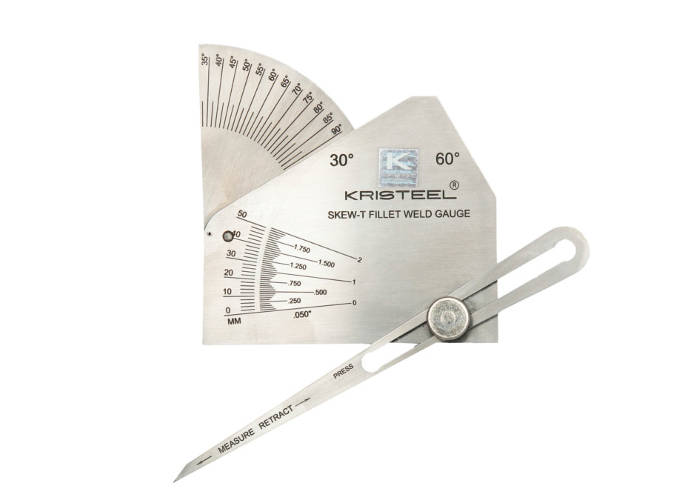Leading Techniques for Measuring Gauge Fillet Weld Accurately
Leading Techniques for Measuring Gauge Fillet Weld Accurately
Blog Article
Fillet Weld Design Methods: Maximizing Joint Performance and Aesthetics for Structural Stability
In the realm of architectural engineering and manufacture, the relevance of fillet weld style approaches can not be overstated. By carefully considering variables such as weld profile optimization, product choice, joint prep work methods, welding procedure effectiveness, and aesthetic enhancement designers, techniques and producers can attain a harmonious balance in between capability and look in their welded frameworks.
Weld Account Optimization


Achieving an optimal weld account includes a thorough factor to consider of variables such as material thickness, joint configuration, welding setting, and wanted welding speed. In addition, the option of appropriate welding parameters, such as voltage, current, and take a trip rate, is essential in controlling the form and dimensions of the fillet weld. Making use of advanced welding techniques, such as pulse welding or robot welding, can even more refine the weld account to fulfill details layout needs and quality criteria.
In significance, weld account optimization is a basic aspect of fillet weld design that straight influences the general efficiency and reliability of welded joints in architectural applications.
Material Selection Considerations
When thinking about product option for fillet weld design, the compatibility of the base steels is a vital factor influencing the structural honesty of the joint. It is important to pick products that not only bonded with each other effectively however likewise possess comparable mechanical residential properties to make sure the lots is equally distributed between the weld and the base metals. Welding materials with greatly different buildings can lead to issues such as stress focus, premature joint failing, or breaking.
In addition, the environment in which the bonded framework will run should be considered when choosing products. Variables like rust resistance, temperature fluctuations, and exposure to chemicals can all affect the longevity and efficiency of the weld joint. By selecting products that are appropriate for the desired application and setting, the general resilience and reliability of the bonded joint can be dramatically improved.
For that reason, comprehensive factor to consider of material compatibility and ecological aspects is critical in making certain the weld joint's strength, resilience, and total architectural honesty.

Joint Prep Work Methods
Thinking about the essential function material option plays in ensuring the architectural integrity of fillet weld joints, it is important to execute specific joint prep work strategies that maximize the connection between the base metals. Joint prep work is a vital step that straight influences the quality and stamina of the weld. One essential strategy is the cleaning of base metals to eliminate any type of impurities like rust, oil, or paint visit this site that could jeopardize the weld's stability. This can be accomplished via approaches such as grinding, cable cleaning, or chemical cleaning.
Moreover, correct fit-up of the joint is important to ensure consistent distribution of the welding material and protect against flaws like insufficient infiltration or excessive buildup. Beveling the sides of the base steels can create a groove that allows for deeper weld infiltration and a stronger bond. In addition, tack welding the parts in location prior to the last weld assists maintain placement and reduces distortion throughout the welding process. By carefully complying with these joint prep work methods, welders can improve the general efficiency and aesthetics of fillet weld joints while guaranteeing architectural stability.
Welding Refine Effectiveness
Efficient welding processes are important for attaining ideal performance and top quality in fillet weld manufacture. Processes like gas steel arc welding (GMAW) and flux-cored arc welding (FCAW) are commonly used for fillet welds due to their versatility and speed.
Regular calibration of welding makers, examination of consumables, and upkeep of welding torches can stop downtime and remodel, eventually conserving time and sources. Well-trained welders are more proficient at readjusting parameters, repairing concerns, and maintaining constant weld high quality.
Visual Improvement Approaches
To optimize the top quality of fillet weld manufacture, carrying out aesthetic enhancement methods can play an essential function in making sure accuracy and precision during the welding process. Visual help such as weld size determines and amplifying lenses can assist in evaluating weld accounts and dimensions precisely. By incorporating these aesthetic improvement techniques right into the welding process, welders can achieve not browse around this web-site just structurally audio fillet welds however likewise visually attractive outcomes that satisfy market requirements.

Verdict
Finally, optimizing fillet weld design involves cautious consideration of weld account, product option, joint prep work, welding procedure effectiveness, and visual improvement techniques. By carrying out these techniques, structural honesty can be boosted while likewise accomplishing aesthetic appeal. It is crucial to focus on both performance and aesthetic appeals in fillet weld layout to guarantee the overall top quality and resilience of the joint.
By diligently taking into consideration elements such as weld profile optimization, material choice, joint preparation techniques, welding process efficiency, and visual improvement methods, designers and producers can achieve an unified balance between capability and appearance in their welded structures.In the realm of fillet weld layout, optimizing the weld profile plays a crucial duty in guaranteeing structural honesty and efficiency. The weld account, which consists of the dimension and form of the weld cross-section, straight influences the circulation of stress and load-bearing capacity original site within the joint. It is crucial to choose materials that not only bonded with each other successfully yet additionally possess comparable mechanical homes to guarantee the load is uniformly dispersed in between the weld and the base steels - Gauge Fillet Weld.In final thought, maximizing fillet weld layout includes cautious consideration of weld account, product option, joint preparation, welding procedure efficiency, and aesthetic improvement techniques
Report this page